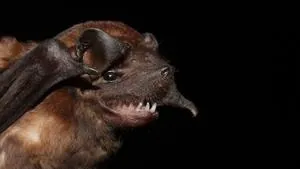
Bats Unmasked: The Unexpected Architects of Morbillivirus Evolution!
2025-05-30
Author: John Tan
A groundbreaking study has unearthed shocking revelations about bats in the Americas and their pivotal role in the spread of morbilliviruses, a notorious group of RNA viruses, which includes the infamous human measles virus. Led by an international team from Charité - Universitätsmedizin Berlin and the German Center for Infection Research, the research highlights urgent concerns about these viruses transitioning from bats to other mammals, specifically in Brazil and Costa Rica.
What Are Morbilliviruses?
Morbilliviruses are notorious for their highly infectious nature, causing serious illnesses in both humans and animals. They include measles in humans, rinderpest in cattle, and canine distemper in carnivores. While rinderpest has been eradicated, other strains pose ongoing threats. Ironically, even though these viruses range widely among mammals, their main carriers and potential for new infections remain poorly understood.
Exploration of Bat Species: A Hidden World!
The research delved into over 1,600 bats across Brazil and Costa Rica, unveiling previously unknown morbilliviruses lurking within several bat species, including the infamous vampire bats. In a startling finding, over one-third of vampire bats showed antibodies against a newly identified morbillivirus, revealing that these infections are not only common but also typically non-fatal.
A Monstrous Connection: Bats to Monkeys - A Human Health Alert?
Disturbingly, researchers also detected morbilliviruses in wild monkeys that had mysteriously perished in Brazil. Though these viruses were not directly linked to the deaths, a genetic probe uncovered a troubling connection: the viruses from monkeys shared close genetic ties with those discovered in bats. Lab results indicated that monkey morbilliviruses could access the same receptors as measles—fueling fears of potential human transmission.
A Silver Lining? Cross-Immunity Insights!
Despite the risks, there is some good news! Tests revealed that antibodies created from prior infections of measles or canine distemper can neutralize bat morbilliviruses, hinting at a form of cross-immunity that could pave the way for developing vaccines.
The Call for Vigilance!
Dr. Wendy K. Jo, the study's lead author, emphasizes the crucial need for monitoring these emerging viruses in wildlife, stating, “While there’s a connection to human receptors, it’s premature to declare an immediate threat to humans.”
Cross-Species Transmission: A Historical Trend!
The research not only indicates the growing diversity of morbilliviruses in bats but also suggests a troubling history of cross-species transmissions to pigs and monkeys. This pattern mirrors the emergence of prior human diseases, including SARS and Ebola, highlighting an alarming trend.
Final Thoughts: The Path Forward!
The scientists urge for more robust surveillance of pathogens in wildlife and comprehensive risk assessments to safeguard both human and livestock health. Prof. Jan Felix Drexler from the German Center for Infection Research likens the findings to a clarion call for vigilance against these lurking viral threats.



 Brasil (PT)
Brasil (PT)
 Canada (EN)
Canada (EN)
 Chile (ES)
Chile (ES)
 Česko (CS)
Česko (CS)
 대한민국 (KO)
대한민국 (KO)
 España (ES)
España (ES)
 France (FR)
France (FR)
 Hong Kong (EN)
Hong Kong (EN)
 Italia (IT)
Italia (IT)
 日本 (JA)
日本 (JA)
 Magyarország (HU)
Magyarország (HU)
 Norge (NO)
Norge (NO)
 Polska (PL)
Polska (PL)
 Schweiz (DE)
Schweiz (DE)
 Singapore (EN)
Singapore (EN)
 Sverige (SV)
Sverige (SV)
 Suomi (FI)
Suomi (FI)
 Türkiye (TR)
Türkiye (TR)
 الإمارات العربية المتحدة (AR)
الإمارات العربية المتحدة (AR)